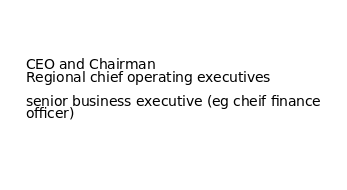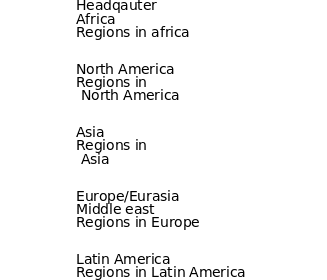Organizational system design refers to the hierarchical arrangement of the company’s authority system. Different organizations use differing structures to define duties, roles and responsibility as well as communication patterns. Organizational structure is a key contributor to the overall success of a company (Bryan & Joyce, 2007). They argue that a good organizational strategy is imperative for a company to gain competitive advantages over the other firms. Though most of the managers invest numerous resources in developing brands, improving their products and marketing to gain competitive edge, they can attain competitive edge through using proper organizational strategy. The use of an efficient organizational structure and design results in the creation of a productive and efficient working environment (Weick, 2009). This in turn results in motivations of employees and customer satisfaction. In this paper, the organizational system design of Coca Cola Company was analyzed so as to reveal their organization design and strategies to improve this design were developed.
Organizational structure of Coca Cola Company
The Coca-Cola Company is one of the leading global producers of soft drinks. The company markets four of the world renowned soft-drinks. The company is a successful multinational company and this is attributed to their unique brand, quality, innovations, availability globally and marketing tactics. The company has a complex business environment with different regions of the world requiring different requirements and this presents difficulties in building and organizational structure that will transform the organizations into a successful company. The company management believes that achievement is only possible if strategies and structure are combined. The organizational design of coca cola company is rather complex and has different hierarchical levels. The organization design of the company is segmented into two main branches; these are the executive/ centralized committee and the regional structure which control the various regions around the world such as North America, Africa, Asia, Europe and Latin America. Each of the regions is then divided into smaller subunits that are managed differently.
The organizational structure at the Coca-Cola head quarters
The organizational structure of the coca-cola company comprise of a twelve member executive committee. One of the members of the committee acts as the chair of all meeting and is also the chief executive officer (CEO) (Coca cola Company, 2004). He is also the senior decision maker. The other members of the executive are heads of the major regions and those with important business specializations such as the Chief Financial Officer. The organizational structure for this region is shown in the figure 1 below:

Next in hierarchy is the regional structure which is a combination of centralization and localization. The company has five main regions referred to as the strategic business units (SBU). In this organizational design each of the SBU is further divided into divisions as show in figure 2 below

The main reasons for structuring different regions this way is as a result of:
- There is the geographical separation between the areas
- The areas have different tastes, lifestyles and preferences
- The various markets are at different growth stages
- Logistics and management issues
The last organization design is the local level. This is found at each of the country where the company operates. For example, in Great Britain, the organization design is shown in figure 3 below:

Thus, the national bottling sectors units have their own operating structure and they answer to the regional offices who in turn answer to the headquarters. This structure only applies where the company operates the bottling factory. In other areas, the company sells the concentrate to independent dealers who bottles the product and sell it locally. This structure combines elements of decentralizations and centralizations. Each of the division operates as teams and they report to the director of each division who in turn report to the GB presidents. In some cases the directors report to regional presidents. For example, the finance director reports to both the GB president and the regional president of west Europe division.
Power Approaches Used By the Company
According to research studies done, management control systems in complex organizations can be use to improve the profitability and competitive edge of a firm. Organizations can improve their performance through the use of work groups and teams in the decision making process (Drake, Haka & Ravenscroft, 1999). The teams are able to make better management decisions as compared to individuals making decisions. Etzioni’s method of organization development indicates that there are three approaches to power and compliance, these are: normative, coercive and the utilitarian. Coercive power utilizes force and fear as the control method on the employees at the lower level. This method is widely used in prisons and in some companies where managers and directors are deemed as having supreme authority and can punish anyone (Lunenburg, 2012). Utilitarian power uses reward so as to control the lower level employees. The rewards are based on increased performance at the workplace and the worker is compensated through gifts, fringe benefits, appraisals and salary increment. Normative power uses intrinsic rewards such as improving the working conditions and group focus.
In terms of coercive control, it can be seen that coca-cola company does not use this method in their organization design. Different regions all over the world have representation and their opinions are taken to considerations (Ginn, Lee & Ellis2006). The different bottling companies are given rights to determine their brands, market them and make any innovations in the soft drinks sector. However, the major instructions are derived from the company headquarters. In the company headquarter, the type of control is basically coercive since most of the decisions are made by the executive and all the other regions have to align to the set strategies and decisions. However, there is some form of consultation within the executive members and regional directors before any global strategy is determined.
Utilitarians uses remuneration and rewards to control the employees. Remunerative control is based on the assumption that one individual or groups of individuals control the performance of organizations. Rewards are given to the best performing workers. This method is not widely seen in this company as most of the regions are free to operate as separate identities. However, at the different bottling companies, many incentives are awarded to the employees so as to increase the sale of the soft drinks. Thus, the local management uses the utilitarian control system so as to control the workers and motivate them to work hard towards the success of the company.
Normative power is associated with high level of organizations participations where workers openly discuss the company goals and engage in dialogue so as to reach a consensus regarding a given issues. The performance controls, reward system and the rules and regulations are all made by the team members (Sisaye, 2005a). This method is not widely used in the Coca Cola Company. The normative approach is mostly used in the bottling company where the different team operates as groups and report to the director within the bottling unit. However, the major decisions within the company are made by the 12 member executive committee who influence marketing, innovations and other decisions that are made. The method shifts the power of the organization from the management to the workers and decisions are made through consensus. This method is beneficial but also difficult to achieve in complex and diverse organization like coca-cola. This method would also flatten the management system from the hierarchical structure to a more flat system which would be very efficient (Sisaye, 2005b). It can be seen that the company is also striving to use normative control as member within a division operate as a group and report to the director within a given a division. This organizations system is more democratic as opposed to other methods. By adopting this system, the company seeks to become more democratic and the workers in a group are willing to take risks and promote shared control and mutual responsibilities. In this control system, the group members monitor the behavior of their colleagues and are also committed to improving the situation in the company. This enables the evolvement of a very innovative organization design (Kirkman and Rosen, 2000). The use of democratic process in decision making results to the development of a good corporate culture. Since teams are involved in the decision making process, employee satisfaction is guaranteed and this results to satisfaction of customer and increase in competitive advantage. The only way Coca-Cola company can use this organizational control and design is through smaller units that can be effectively managed through teamwork and group focus.
Recommendations
The Coca-Cola Company should use a mixed method approach during their organizational design changes. A combination of both the Utilitarian method and the normative method should be used.
At the regional level, the company should use the normative approach where the workers should be involved in the decision making process. This will ensure that team working within a given division will develop appropriate solutions to problems affecting them. This will also ensure that the team players actively contribute to the decision making process. The company should also continually educate the workers on effective team management and the ideals of working as a group towards achieving the company goals (Donnenberg & De Loo, 2004).
The Utilitarian method should also be used so as to motivate workers towards achieving the company’s mission and vision. The workers should be motivated at an individual level so that they become more innovative and more productive. The Utilitarian method can also be used in conjunction with the normative approach where divisions and teams are rewarded. Such motivations will enable teams at different divisions to work together so as to achieve a reward and the shared vision.
In culmination, it is necessary that the company uses mixed methods due to its complex organizational design. The two main control methods should be the Utilitarian and the normative approach. Most of the changes that can be made to the organization design of coca-cola should be more focused on the local bottling companies that have a direct contact with customers.
References
Bryan, L. L., & Joyce, C. I. (2007). Better strategy through organizational design. The McKinsey Quartery 1(2) 21-29.
Coca cola Company. (2004). Creating an effective organizational structure. Web.
Drake, A.R., Haka, S.F. and Ravenscroft, S.P. (1999), “Cost system and incentive structure effects on innovation, efficiency and profitability in teams”, The Accounting Review, Vol. 74 No. 3, pp. 323-45
Donnenberg, O., & De Loo, I. (2004). Facilitating organizational development through action learning—some practical and theoretical considerations. Action Learning: Research and PracticeVol. 1, No. 2, 166-184
Ginn, G. O., Lee, R., & Ellis, T. (2006). Community orientation, strategic flexibility and Financial performance in hospitals. Journal of Healthcare Management, 51(2), 111-122.
Kirkman, B.L. and Rosen, B. (2000), “Powering up teams”, Organizational Dynamics, Vol. 28 No. 3, pp. 48-66.
Lunenburg, F. (2012). Compliance Theory and Organizational Effectiveness. International Journal of Scholarly Academic Intellectual Diversity, 14(1), 1-4
Sisaye, S.(2005a) Teams and management control systems: a synthesis of three Organizational development approaches. Leadership & Organization Development Journal Vol. 26 No. 3, pp. 172-185
Sisaye, S. (2005b), “Management control systems and organizational development: new directions for managing work teams”, The Leadership & Organization Development Journal, Vol. 26 No. 1.
Weick, K. E. (2009). Making sense of organization: the impermanent organization. Chichester: John Wiley & Sons.